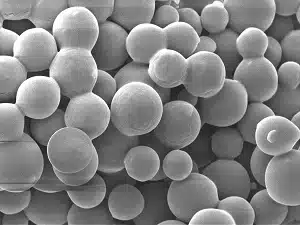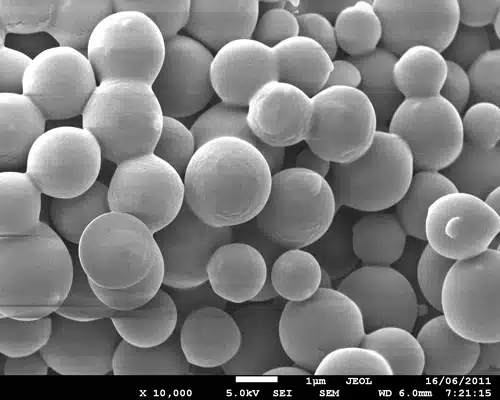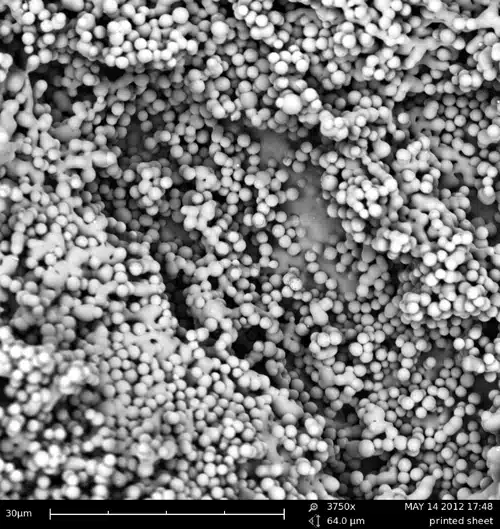Asthma inhalers could soon become much more effective, thanks to a clever new way of making the particles they deliver invented by a Melbourne chemical engineer and his team.
Current puffer designs and typical size ranges of particles mean a large portion of the medication propelled into a patient’s throat remains there. Only a fraction reaches the lungs.
But Monash University lecturer Dr Meng Wai Woo and his team have now developed a method of making ultra-fine particles, which will make drug delivery much more consistent and efficient. The new method, known as anti-solvent vapour precipitation, uses ethanol to dehydrate droplets, and results in super-small particles of uniform size.
“Ultrafine uniform particles will ensure that fewer drug particles get stuck in the throat while more can reach the lower regions of the lungs,” said Dr Woo. “Because we can now make the small particles more uniform, it means the inhalers will work better.”
The team’s work results in particles smaller than a micron (thousandth of a millimetre) in diameter – much smaller than those produced by conventional dehydrating mechanisms, which are limited by the size of the atomised droplet.
The team’s discovery was unveiled at the 18th International Drying Symposium in Xiamen, China, last year. It is likely to excite a lot of interest among pharmaceutical companies. Infusion devices and metered dose inhalers account for around $US20 billion in worldwide sales each year, with the key development aim being to balance improved efficiency against the cost of manufacture.
“From a drug manufacturer’s perspective, this new approach can maintain the uniformity of the particle and yet potentially maintain commercially viable production rate,” said Dr Woo.
Investigations into using ethanol as a means of producing ultrafine particles began in 2011, as part of Dr Woo’s ongoing research into manufacturing processes in the dairy industry.
Attempting to produce lactose crystals, his team decided to reject the traditional hot air drying method and use nitrogen laced with ethanol vapour as an alternative dehydrating agent.
To their surprise, the result was not the crystals they expected, but hundreds of very tiny, very uniform lactose particles. Further testing showed that the amount of alcohol absorbed into the initial droplets was a key variable in influencing the outcome.
Dr Woo’s method means that the pharmaceutical industry can now potentially deliver critical medicines via the airway direct into the lungs with much greater accuracy.
Assisted by a grant from the Australian Research Council, the Monash team is now testing its method on another dairy product – whey – researching the ultrafine particle delivery of protein-based medicines. They are also building a demonstration unit to showcase the anti-solvent vapour precipitation process, which will be completed later this year.
Dr Woo is one of 12 early-career scientists unveiling their research to the public for the first time thanks to Fresh Science, a national program sponsored by the Australian Government through the Inspiring Australia initiative.
For interviews:
- Niall Byrne, 0417 131 977, niall@scienceinpublic.com.au or AJ Epstein, 0433 339 141
- Monash University Media Communications: media@monash.edu.au, 03 9903 4841








 Fresh Science is on hold for 2022. We will be back in 2023.
Fresh Science is on hold for 2022. We will be back in 2023.